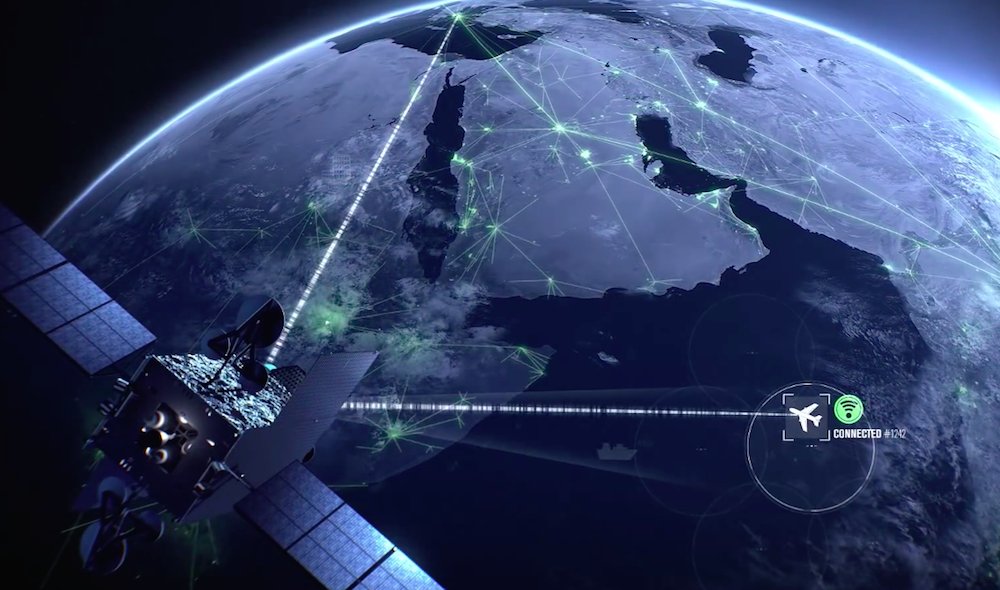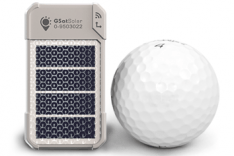GSatSolar Enables Affordable Satellite IoT
The IoT Sandbox
While this sounds complicated, what IoT truly provides is the ability for businesses to maximize, manage, and monetize information to improve decision making at every level. This space has been dominated by large network suppliers and their partners in the hardware and software domain offering expensive solutions for larger clients. As a result, trends show these companies completely shutting small businesses out of the IoT market, making it difficult to compete with their larger competitors. With the introduction of the GSatSolar, however, there is a shifting power dynamic that's hard to ignore.
Understanding Challenges
Within IoT, solutions based in traditional cellular network coverage and wifi-supported devices have proliferated to near saturation in a matter of 10 years. Every device capable of sending data and receiving commands has been upgraded to be a smart or connected device, and consumers are rapidly adopting the connected versions of appliances, household items, portable electronics, and wearables. Commercial IoT has infiltrated the factory and worksite environment to a great degree as well, but remote applications still face infrastructure challenges related to coverage area. For those solutions that do exist in satellite, the natural choice for extended area coverage, options can be incredibly expensive and come with device specs that make many applications unfeasible.
IoT solutions should provide the means to maximize efficiency within a company. This needs to be something that can be accomplished by monitoring all goods or tools regardless of size or weight. The financial impact of an IoT solution should be based on the value of the item being monitored, not the size of the device providing the monitoring. IoT solutions should not be limited to cargo or equipment large enough to house the tracking unit. The ideal solution should also allow any company, big or small, to monetize their data by providing superior solutions to their customers; be it improved security, reduced operating costs, or more product available because of visibility.
Satellite Closes IoT Infrastructure Gaps
Cellular providers have very robust networks throughout much of the developed world. There are, however, large opportunities for providing solutions when there is a lack of strong infrastructure. The cellular providers also have little technical support for the hardware and solutions they offer as they focus more on their network capabilities. Satellite based IoT solutions, however, have historically posed their own group of challenges.
Satellite based IoT solutions typically are administered by either network providers, who are more accustomed to dealing with airtime support than how to manage a solution, or by hardware developers providing expensive devices with large footprints and limited solutions. While these hardware providers may make fantastic IoT devices, they do so understanding that their solutions are catered to larger organizations with the financial means to afford their units. Finally, independent technologies like LoRa and RFID at their face appear considerably cheaper than these solutions, but require expensive and complex installations to process information from their sensors, then only deliver service to a limited connected area.
Solving Problems
About the GSatSolar
The GSatSolar is a small, solar-powered, low-cost tracking device rugged enough to help anyone easily track anything under the sun. GSatSolar as a solution is the perfect combination of an easy to use tracking device, industry-best powerful tracking software, and the reliability of satellite infrastructure in off-grid locations. Together, these forces make the GSatSolar ideal for outdoor tracking of anything with four wheels or four legs, or the perfect option for a multitude of IoT and remote status reporting applications.
GSE has been on the cutting edge of developing telematics and IoT solutions for nearly two decades. This has included hardware that works across satellite and cellular networks, as well as the telematics software that allows configuration and understanding of the behavior of these solutions. Using this experience and knowledge, GSE in partnership with Globalstar has developed the GSatSolar. This new product will address many of the shortcomings that prevent more persons from engaging in smart IoT.
The unit itself is satellite based, operating on Globalstar’s robust network. This will provide tracking and telemetry data across almost every landmass. It will do so regardless of whether operating in a bustling city or in remote locations still unserviced by traditional infrastructure. This information will be supported and managed either through GSE’s proven software, GSatTrack, or by integration with other software offerings. This will all be provided in a cost-effective solution that is priced for consumer and commercial projects alike.
Where many other IoT devices struggle is size and power consumption. The GSatSolar is so small it can potentially be affixed to tools and even smaller items to reduce theft, manage usage and provide data regarding items never imagined before. Because of the GSatSolar’s solar panel technology, the unit will not require permanent installation or force users to be familiar with wiring diagrams. The unit need only have clear visibility of the sun for a few hours throughout the day to remain working for three years.
The Future of IoT with GSatSolar
The GSatSolar opens up a world of opportunities in a sector of the IoT space that was previously inaccessible. Customers will have a tracking unit capable of being used across several markets with almost no limits to the application. Whether the GSatSolar is used in agriculture to monitor produce and its placement in the supply chain, science applications to understand weather information, or by rental companies in the construction space to ensure they never lose another small yet expensive tool, the GSatSolar will allow companies to make decisions in a way never before possible. The future of IoT is GSatSolar and the future is here.
To learn more about the GSatSolar and how it can enable a remote, satellite-based IoT solution for your organization, we encourage you to visit the GSatSolar website, sign up for the newsletter, and take a look at the GSatSolar Industrial Design Blog Series. We're excited to bring this new solution to you, and can't wait to hear from you about how you intend to leverage it.




